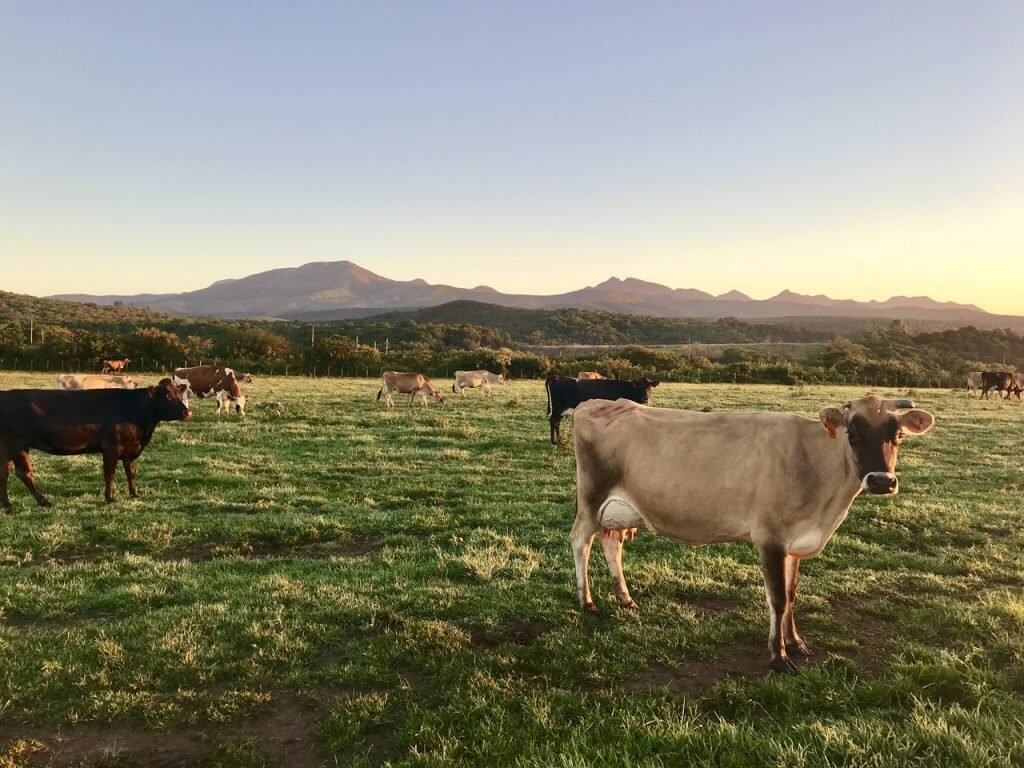This week’s ten biggest climate innovation stories – 28 June

Could algae replace grain in a cattle’s diet? Can seaweed solve the plastic crisis? And, how is the EU making it a right for you to sell your own renewable energy? This, and more, in the week’s ten biggest climate innovation stories.
1. Could algae replace grain in cattle’s diet?
If just two per cent of livestock feed was replaced by microbial protein feed made from various microbes, like yeasts and algae, computer models suggest it could lead to an eight per cent decrease in global nitrogen losses (as soy is very nitrogen-hungry), a seven percent reduction in greenhouse gas emissions and a six percent increase in available cropland, which could then be used for other crops. Read more on Modern Farmer
2. EU-made batteries crucial for integration of renewables in Europe
A critical and strategic component in Europe’s e-mobility value chain, which is still weak, is batteries, European Commission Vice-President for the Energy Union has said . “We are stepping up EU research and innovation to better link it with industry’s future needs: in 2018-2019, a 110 million available for battery-related research and innovation projects; in 2018-2020, a budget of €2.7 billion available under the European Innovation Council for potential breakthrough projects and batteries could be part of it. Read more on New Europe
3. 14 European countries call for stronger EU climate action
A group of European countries known as the Green Growth Group have called on the European Commission to update the EU’s pledge at the UN’s next annual climate meeting in December this year, and chart a pathway consistent with a 1.5°C global warming scenario by 2050. [inlinetweet prefix=”” tweeter=”” suffix=””]The EU should consider announcing at COP 24 its readiness to update its NDC by 2020 the coalition write, referring to Nationally Determined Contributions submitted to the United Nations as part of the Paris Agreement. [/inlinetweet]The letter was signed by the environment Ministers of Belgium, Denmark, Estonia, Finland, France, Germany, Italy, Luxembourg, the Netherlands, Portugal, Slovenia, Spain, Sweden and the United Kingdom who were in Luxembourg for a meeting of the Environment Council. Read more on EURACTIV
4. EU makes it a right for people to sell renewable energy
The final version of the EU’s renewable energy has significant potential to change how power is generated and consumed. Outcomes include the right to produce renewable energy, consumers being paid for what they produce, new electricity sharing schemes providing renewable energy to low-income consumers, and more local ownership of renewable energy will be encouraged. Read more on UNEARTHED
5. Europe’s first solar panel recycling plant opens in France
French water and waste group Veolia has opened what it says is Europe’s first recycling plant for solar panels and aims to build more as thousands of tonnes of ageing solar panels are set to reach the end of their life in coming years. Read more on Reuters
6. Could seaweed solve the plastic crisis?
Currently, most bio-plastics derive from terrestrial sources related to the food industry, including corn, sugarcane and cassava. However, according to Bakti Berlyanto Sedayu, a researcher with the Indonesian Ministry of Marine Affairs and Fisheries, seaweed is a far more sustainable alternative. Land based bio-plastics require huge investments in land, risking the kind of catastrophic deforestation we’re seeing with palm oil. They also use fertilizers and pesticides and are not always as biodegradable as they’re touted to be. By contrast, seaweed is cheap to produce as it is cultivated offshore, grows quickly and doesn’t require fresh water or chemicals to grow successfully. Seaweed beds are also natural carbon sinks, de-acidifying water. Read more on The Guardian
7. This edible, plastic-free packaging is grown from kombucha starter
Polish design student Roza Janusz has created Scoby, an eco-friendly alternative to plastic packaging that is easily grown with the same methods used to make kombucha. Created from fermented bacteria and yeast, the organic membrane can be used to store a variety of lightweight foods like seeds, nuts, or even salads. Read more on Inhabitat
8. Building air conditioners that won’t make climate change worse
University of Singapore Professor Ernest Chua’s solution is an air-cooling device that runs exclusively on water. Hot air is sucked into a machine where a membrane removes moisture. The dried air is blown over a layer of water, cooling it. As well as not using refrigerants, the unit will be 30 per cent more efficient than existing technology. In the U.S., a startup called SkyCool Systems puts special panels on the roof of a building and runs water pipes beneath them. The water cools and is then circulated throughout a building. Integrating this technology into an existing AC system could cut electricity use by 20 per cent, while installing in new buildings could save up to 70 per cent. Read more on Bloomberg
9. Designing new climate change solutions, with inspiration that is millions of years old
A tidal energy harvester inspired by the human heart. A soil erosion solution that mimics a kingfisher’s eyelid. A mosquito-control device that functions like carnivorous plants. These technologies are among the winners in a global competition that asks innovators to create radically sustainable climate change solutions inspired by the natural world. Read more on Triple Pundit
10. Austrian plastics company aims to makes products completely from recycled plastics
Plastic refuse should be seen as a raw material, able to produce “completely waste-based” recycled goods, the incoming chief executive of Austrian plastics maker Borealis AG has said, vowing his firm would do its bit to cut pollution. Read more on Reuters
